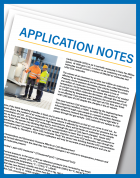

BAPI makes a complete line of air quality sensors for demand controlled ventilation including Volatile Organic Compound (VOC), Carbon Dioxide (CO2), Particulate Matter, Carbon Monoxide (CO) and Nitrogen Dioxide (NO2).

CO2 Sensors
BAPI’s CO2 sensor received an AHR Expo Innovation award because of their built-in Barometric pressure sensor that continuously compensates the output for accurate readings despite the weather or altitude. They come in two models– one that is optimized for continuously occupied areas and another that is optimized for periodically unoccupied areas.
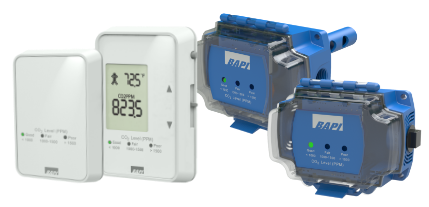

BAPI-Stat “Quantum” CO2
- Automatic Barometric pressure and temperature compensation
- Models for periodically unoccupied or continuously occupied areas
- Local LED indication
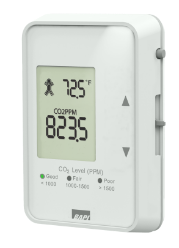
BAPI-Stat “Quantum” Prime CO2
- Automatic Barometric pressure and temperature compensation
- Optional temp/humidity, setpoint, override
- Models for periodically unoccupied or continuously occupied areas
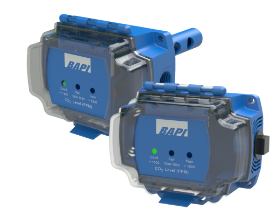
BAPI-Box Duct or Rough Service CO2
- Automatic Barometric pressure and temperature compensation
- Duct aspiration tube or rough service ventilated BAPI-Box
- Models for periodically unoccupied or continuously occupied areas

VOC Sensors
BAPI’s VOC sensors respond to all air contaminants, rather than just CO2, for a more accurate indication of indoor air quality than a CO2 sensor alone.
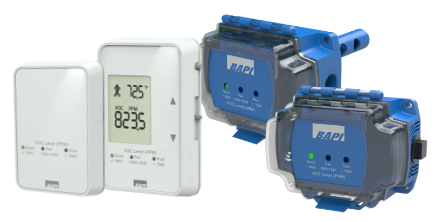
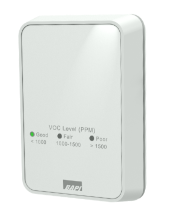
BAPI-Stat “Quantum” VOC
- Achieves true indoor air quality, not just CO2 dilution
- Output is correlated to a CO2 value allowing you to ventilate using ASHRAE’s CO2 based VRP algorithm
- BAPI-Stat “Quantum” enclosure with 0 to 5 or 0 to 10 VDC output
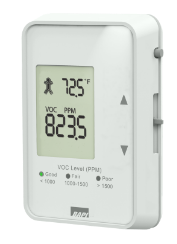
BAPI-Stat “Quantum” Prime VOC
- VOC alone or temperature and humidity combination
- Achieves true indoor air quality, not just CO2 dilution
- Output is correlated to CO2 value allowing you to ventilate using ASHRAE’s CO2-based VRP
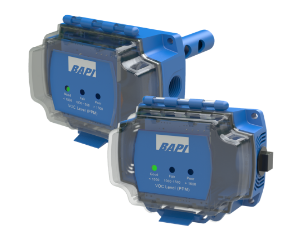
BAPI-Box Duct or Rough Service VOC
- Corresponds to ASHRAE’s CO2-based DCV algorithm
- Duct aspiration tube or rough service ventilated BAPI-Box
- 0 to 5 VDC or 0 to 10 VDC output

Particulate Sensors
BAPI’s Particulate sensors help you measure what is coming in your buildings. Particulate Matter (PM) is often referred to as dust, but it is more than the common dust that settles on your flat screen TV. The Environmental Protection Agency (EPA) defines it as a mixture of solid particles and liquid droplets found in the air. Although most particulates are not in the shape of a circle, “diameter” is often used to describe the size of particulates.
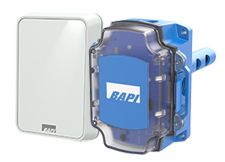
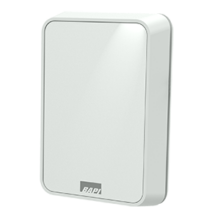
BAPI-Stat “Quantum” Particulate Sensor
- Laser-based, light scattering particle sensing with 10 year expected lifetime
- Field selectable; particulate size and output
- Modern style “Quantum” enclosure
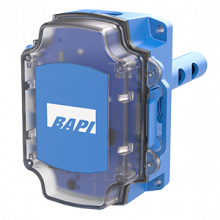
BAPI-Box Duct Particulate Sensor
- Rugged IP66-rated enclosure
- Field selectable; particulate size and output
- Aspiration tube adjusts for vertical or horizontal airflow

Hazardous Gas Sensors
BAPI’s CO sensors are available for room, duct and rough service areas. The room units feature a 30ppm alarm trip level with relay and audible alarm. The duct and rough service units include four field-selectable CO ranges between 0 to 100 and 0 to 500ppm, large display and two independent alarm relays with field selectable CO concentration trip levels of 25, 35, 50, 100, and 200ppm. The NO2 units are available for duct and rough service areas and feature four field selectable ranges between 0 to 2.5 and 0 to 10ppm. They also include a large display and two independent alarm relays with field selectable NO2 concentration trip levels of 1, 2.5, 5, 7.5 or 10ppm.
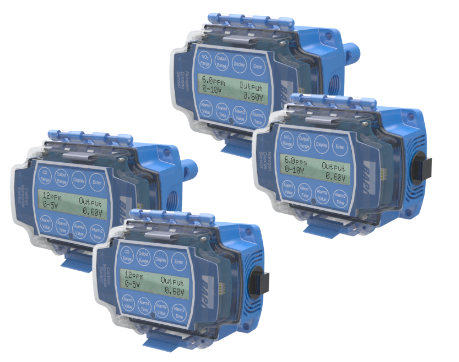
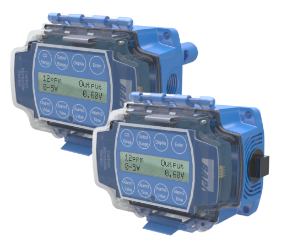
BAPI-Box Duct or Rough Service CO
- Field replaceable electrochemical sensor with self test
- Field selectable outputs and CO ranges
- Two independent alarm contacts
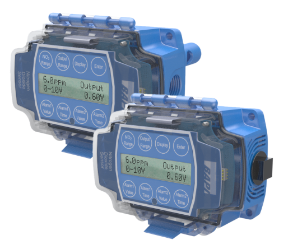
BAPI-Box Duct or Rough Service NO2
- Field replaceable electrochemical sensor
- Two independent alarm contacts
- Field selectable output and NO2 ranges

BAPI-Stat “Quantum” CO Room Sensor
- 0 to 40ppm CO measurement range
- 30ppm CO relay trip level with audible alarm
- Field selectable 0 to 5V, 0 to 10V or 4 to 20mA output


